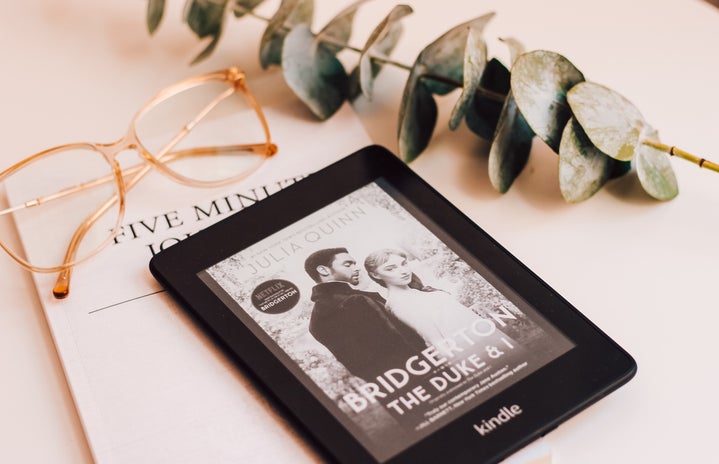As a kid, I was always surrounded by books: I learned how to read using Hooked on Phonics, and I was enthralled every time my elementary school teachers would read the Ralph S. Mouse series or Bridge to Terabithia. When I was in middle school, my dad gifted me a Kindle Fire for Christmas because I would always read on my sister’s Kindle Paperwhite. I thought it was the greatest gift ever because not only could I read to my heart’s content on my own device, but I could do it all without having to lug a heavy book around!
Although I had a Kindle, I didn’t abandon my bookshelf that I would still browse when I wanted to revisit my favorite books. Even now, all these years later, I still have that same Kindle in my college apartment with a new collection of books waiting to grow. I’ve gone back and forth with physical and digital books, and I’ve learned that both have their pros and cons. If you’re at an impasse as to how you want to read your books, I’ve outlined my thoughts below. Hopefully this helps!
E-readers
I have only ever used the Kindle series of e-readers and my iPad, so I will talk about my experiences with both. As mentioned previously, I like using e-readers when I am on the go and would not rather carry heavy books around. Additionally, since most e-readers are also designed to show one page at a time, I find myself actually focusing on what’s right in front of me instead of flipping through the pages and being impatient.
I also use my iPad Pro to read up on textbooks for class, as it has much wider dimensions than a Kindle and the Apple Pencil allows me to jot things down. As a Psychology major, many of my classes are reading and writing intensive and it is better for me to have free PDFs of my textbooks on a dedicated app – I like to use LiquidText solely for its highlighting function as I take notes separately on a notebook, but many have praised its features that enable you to be truly paperless. I have never been one for highlighting on a physical textbook, and doing so on the iPad grants me flexibility in that I could erase my highlight if I wanted to.
Despite all of that, e-readers do have some drawbacks. Being electronic devices, you do have to charge them, and there have been many times I rushed to school only to find out my iPad is on the verge of dying! Additionally, we have been staring at screens for work meetings and school for two years now, and so many would prefer physical books instead or at least want to reduce blue light. In my free time, I have been trying to stay off my phone and other devices to “be in the moment” too, but sometimes I just can’t resist finding out what happens in a book I have only on my Kindle. If the portability of an e-reader sounds tempting but not so much blue light, I suggest looking into the Kindle Paperwhite. It does not emit as much blue light and shouldn’t negatively impact your sleep.
Physical Books
Old-fashioned physical books are always fun to flip through, and a library or bookstore towering with stocked bookshelves are calming environments for me. I tended to read more physical books back in high school as you couldn’t pull out any electronic device (not even your phone!). Now, the majority of what’s in my apartment bookshelf are cookbooks and comic books, as I believe that owning certain types of books physically makes for a better reading experience.
Being able to see a picture of what you’re going to make as well as the ingredients side-by-side is much more convenient than having to tap back and forth on an e-reader. The same goes for comic books where scenes might be taking up multiple pages. I have also found that other reference books, such as The Little Seagull Handbook or “They Say / I Say” and the concepts they teach flow much better if you aren’t limited to a single page at a time.
My bookshelf back at home is stuffed with books that I have read time and time again – ones that have been my favorite at some point in time and would never dream of donating. Most of them are regular-length novels (as epic sagas are reserved for my Kindle!) and it was easy to just pick something up and start reading. I don’t have as many books in this apartment, but I plan to do something similar the next time I visit a bookstore.
The ability to jump to a chapter that is present in the Kindle or iPad obviously doesn’t exist with a regular book, and if I come across a word I don’t know, I can’t press on it to immediately get a definition. Even so, physical books are still near and dear to my heart.
As I said, these were just my thoughts about the different ways to read, and some days I like to choose one over the other. Everyone is different when it comes to personal preference, and if you’re deciding on which one to stick with, I encourage you to do your own research and find out what works best for you. Thanks for reading!

